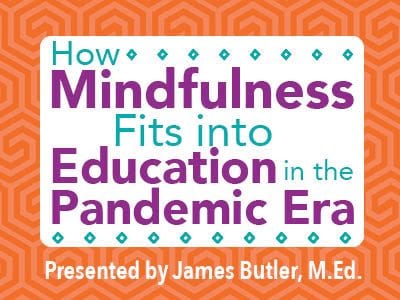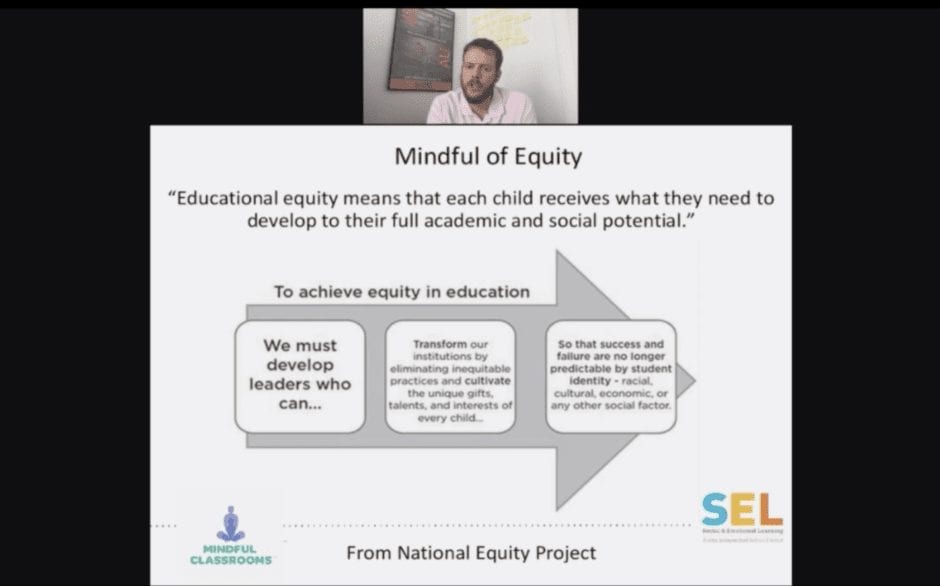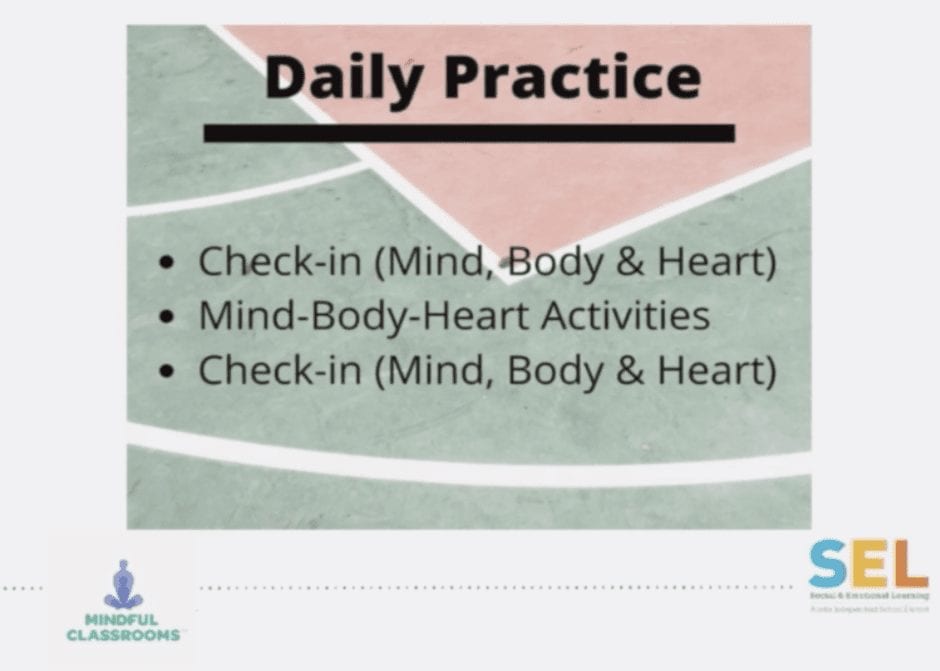Combining Mindfulness and Equity Throughout the New School Year
By Robert Low
Now that a global pandemic and its multiple impacts on education have coincided with a renewed focus on equity, there’s a lot to be mindful about. And with the new school year about to present even more challenges and uncertainties, staying mindful and staying focused on providing an equitable education are likely to prove more difficult and important than ever.
During Free Spirit Publishing’s edWebinar, the social-emotional learning and mindfulness specialist for the Austin Independent School District, James Butler, explained ways that educators can work with their students to improve their mindfulness and the equity of their schools under these unique circumstances.
Referring to a graphic that showed three concentric circles, James pointed out that educators’ mindfulness needs to start with themselves but should also be applied to their students, as well as to the school systems that can determine whether or not students receive an equitable education.
Mindful Support for Educators and Students
James emphasized that educators need to take good care of themselves if they are going to do the “the long, hard work” of teaching effectively during a pandemic and striving to end inequities that have existed for centuries. He, therefore, encourages educators to develop a daily practice of checking in with their mind, body, and heart, and then engaging in a variety of activities that promote mindfulness and self-care.
James also recommends that educators start small, perhaps for just five minutes, and then gradually extend what they do. As a long-time basketball fan, he likened daily mindfulness practice to the time basketball players spend practicing their foul shots every day. As a result of that daily practice, he explained, “When you’re in the game and get fouled, you can step up to the line, your muscle memory kicks in, and you’re still able to perform.”
To help students with their mindfulness and stress relief, educators can encourage the students to develop their own daily practices, and to engage in activities that they find meaningful and helpful, such as listening to music, writing in a journal, or reading for fun. And James emphasized the importance of educators listening to diverse student voices in regard to what works best for each of them in order to provide effective assistance and support.
Applying Mindfulness to Equity
Educators’ mindfulness about their own situations and those of their students are crucial first steps in the effort to provide a more equitable education that results in better outcomes for their full range of students. Citing the National Equity Project, James encouraged educators to consider how best to cultivate each student’s unique talents and interests, while also working to end inequitable practices within their own “sphere of influence,” as well as by transforming larger institutions.
This can be accomplished in part through “mindful inquiries” about equity in education, which can include considering who is involved or not involved in making key decisions about topics such as school re-openings, and who is then included or excluded from the results of those decisions. Another important inquiry is considering who has full physical, mental, and emotional access to the education being offered, and who does not.
The goal is to make sure that all students receive what they need to develop their full academic, social, and emotional potential, and the process of achieving this includes staying engaged, striving to learn new things, and sharing your wisdom. Also important is expecting and accepting “non-closure,” as the extent and duration of inequitable practices, as well as their differing impacts on individual students, make them difficult to resolve quickly and completely.
In closing, James focused on educators’ power to choose their responses and to continue to improve. Citing research on the brain and its neuroplasticity, he pointed out that mindfulness can help educators and students form new neural pathways that will make them better able to respond and adapt to the unprecedented situations they will undoubtedly encounter during the new school year.
This edWeb broadcast was sponsored by Free Spirit Publishing.
This article was modified and published by eSchool News.
About the Presenter
James Butler, M.Ed. has been teaching kindergarten and prekindergarten since 2002. He has a B.S. in education and early childhood from Indiana’s Manchester University and an M.Ed. in curriculum and instruction from Grand Canyon University. He is now the SEL (social-emotional learning) mindfulness specialist for the Austin Independent School District (AISD), working with teachers, staff, administrators, parents, and grades preK–12 students. During the 2016–2017 school year, James helped implement a mindfulness curriculum in all 130 AISD campuses. He lives in Austin, Texas.
Join the Community
Social-Emotional Learning, Positive Behavior, and Student Achievement is a free professional learning community on edWeb.net that offers a place for educators to explore practical, effective ways to integrate social-emotional learning, inclusive teaching practice, and higher-level instruction.

Robert Low has more than 30 years of educational publishing experience, ranging from editing and product management to online advertising and content development. He also works with edWeb.net to write articles on their professional learning edWebinars.





Comments are closed.